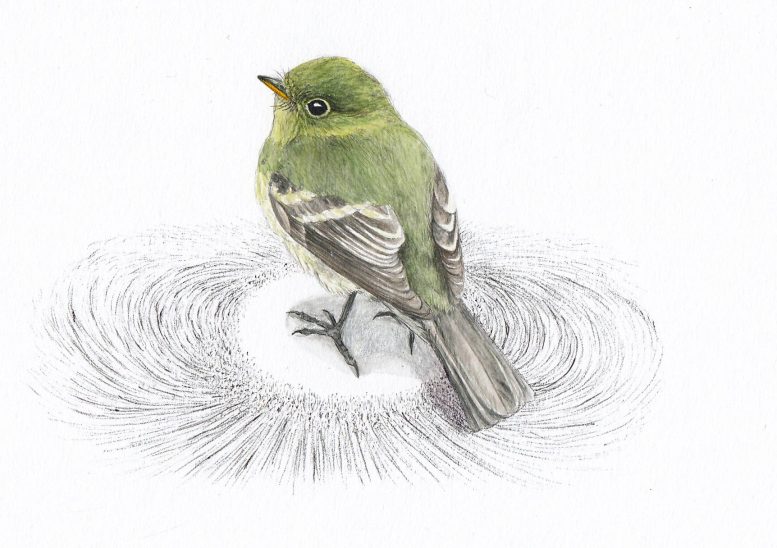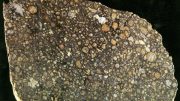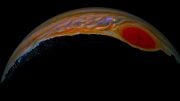
The Yellow-bellied flycatcher (Empidonax flaviventris) is a small insectivore of the tyrant flycatcher family that cannot produce the protein cryptochrome 4. The birds breed in North America and migrate to southern Mexico and Central America in winter. Credit: Corinna Langebrake
A new genetic study suggests that the protein cryptochrome 4 in bird eyes is key to their magnetic navigation abilities, with evolutionary changes highlighting its role in adapting to different environments.
Migratory birds have the ability to navigate vast distances with remarkable accuracy by using various mechanisms, including a magnetic compass. In a recent study, a team led by biologists Dr. Corinna Langebrake and Dr. Miriam Liedvogel compared the genomes of several hundred bird species and discovered significant evolutionary changes in the gene responsible for encoding the protein cryptochrome 4. This protein, found in the birds’ eyes, is believed to be the key magnetoreceptor driving their navigation abilities.
Cryptochrome 4 as a Magnetoreceptor Candidate
These findings are indicative of adaptation to varying environmental conditions and support the theory that cryptochrome 4 functions as a sensor protein, as the team reports in a paper recently published in the British Royal Society research journal Proceedings of the Royal Society B Biological Sciences.
The study was prompted by research at the Universities of Oldenburg and Oxford which demonstrated that magnetoreception is based on a complex quantum mechanical process that takes place in certain cells in the retinas of migratory birds. These findings, which were published in 2021 by the science journal Nature, provided evidence supporting the hypothesis that cryptochrome 4 was the magnetoreceptor they had been looking for. They proved cryptochrome 4 is present in the birds’ retina. Additionally, both experiments with bacterially produced proteins and model calculations showed that cryptochrome 4 exhibits the suspected quantum effect in response to magnetic fields.
Comparative Sensitivity in Bird Species
The previous study also found that cryptochrome 4 exhibits greater sensitivity to magnetic fields in migratory birds like robins than it does in resident species like chickens and pigeons. “Consequently, the reason why cryptochrome 4 is more sensitive in robins than in chickens and pigeons must be found in the protein’s DNA sequence,” says Langebrake, the lead author of the study. “The sequence was probably optimized by evolutionary processes in these nocturnal migratory birds,” she adds.
In the current study, the team investigated magnetoreception from an evolutionary perspective for the first time. The researchers analyzed the cryptochrome 4 genes of 363 bird species. First, they compared the protein’s evolutionary rate with that of two related cryptochromes and found that the gene sequences of the cryptochromes used for comparison were very similar across all bird species. They appear to have changed very little over the course of evolution. This is most likely due to their key role in regulating the internal clock – a mechanism that is essential for all birds and in which modifications would have extremely negative effects.
Cryptochrome 4, by contrast, proved to have been highly variable. “This suggests that the protein is important for adaptation to specific environmental conditions,” explains Liedvogel, a Professor of Ornithology at the University of Oldenburg and director of the Institute of Avian Research. The resulting specialization could be magnetoreception. “A similar pattern has been observed in other sensory proteins such as light-sensitive pigments in the eye,” she explains.
The researchers then took a closer look at how the gene sequence for cryptochrome 4 has evolved in the evolutionary history of birds. Their analysis revealed a notable trend, particularly within the passerine (Passeriformes) order, where the protein underwent significant optimization through rapid selection. “Our results indicate that evolutionary processes could have led to cryptochrome 4 specializing as a magnetoreceptor in songbirds,” says Langebrake.
Tyrants Have Lost the Suspicious Protein
The study revealed that cryptochrome 4 was absent in certain bird clades, such as parrots, hummingbirds, and Tyranni (Suboscines). This indicates that it does not play a vital role in their survival. However, while parrots and hummingbirds are sedentary, some tyrants are long-distance migrants which, like small European songbirds, fly both during the day and at night. “The fact that, unlike robins, they do not have cryptochrome 4 makes them an ideal system for investigating various hypotheses about magnetoreception,” says Langebrake.
This poses the question: have the Tyranni developed a magnetic sense that works independently of cryptochrome 4, or are they able to orientate themselves without a magnetic sense? Another possibility is that their magnetic sense has the same characteristics as that in robins, which is light-dependent and can be disrupted by radio waves. “The first two scenarios would strongly corroborate the cryptochrome 4 hypothesis, while the third would pose a problem for the theory,” the biologist emphasizes.
Moving forward, the research team plans to investigate the magnetic orientation in Tyranni and determine whether or not they have a magnetic sense.“The Tyranni clade provides us with a natural tool for understanding the function of cryptochrome 4 and the importance of magnetoreception in migratory birds,” says Liedvogel.
Reference: “Adaptive evolution and loss of a putative magnetoreceptor in passerines” by Corinna Langebrake, Georg Manthey, Anders Frederiksen, Juan S. Lugo Ramos, Julien Y. Dutheil, Raisa Chetverikova, Ilia A. Solov’yov, Henrik Mouritsen and Miriam Liedvogel, 7 February 2024, Proceedings of the Royal Society B.
DOI: 10.1098/rspb.2023.2308









Be the first to comment on "Quantum Magnetoreception: The Evolutionary Secrets of Bird Navigation"